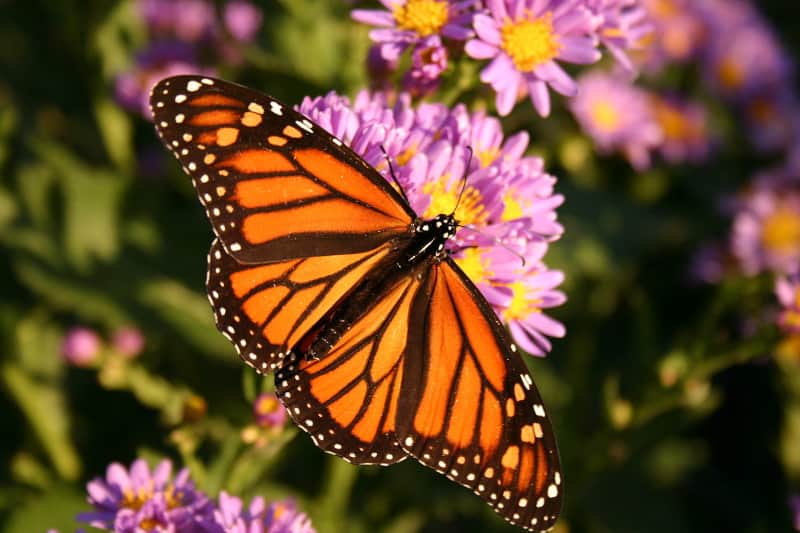
Monarch Butterfly Facts
- This truly breathtaking creation of Nature and evolution most frequently goes by the well deserved name of the Monarch Butterfly. The wonder has several other less often used titles, though. These include such terms as common tiger, wanderer, and black-veined brown.
- Inside of scientific communities, however, it’s possibly better known by its purely official moniker. Fortunately for the layperson, that’s a comparatively simple title, as such things go. That’s because this marvelous Lepidoptera bears the official name of Danaus plexippus.
- The invertebrate received that name due to the efforts of the esteemed Swedish zoologist, Carl Linnaeus himself. He recorded the first recognition of the creature as a separate and distinct species. The researcher accomplished this scientifically noteworthy feat in the year 1758.
- Interestingly, a total of three species actually bear the same general appellation. The specific creature referred to in this article, though, remains by far the best known and most commonly referred to. A total of six acknowledged subspecies of the insect also exist across the globe.
- The gorgeous Monarch Butterfly inhabits a moderately large territorial range. It also engages in impressive seasonal migrations. Sadly, the amazing beauty now finds itself in danger. Accordingly, the IUCN thus lists it as Endangered on its Red List of Threatened Species.
- It now faces many threats to its continued existence as a species. That’s true in both short and long term. Most of these, though, stem from human activities. Human herbicide use has killed much of its food source. It also now faces the same threat of climate change as we all do.
Related Articles
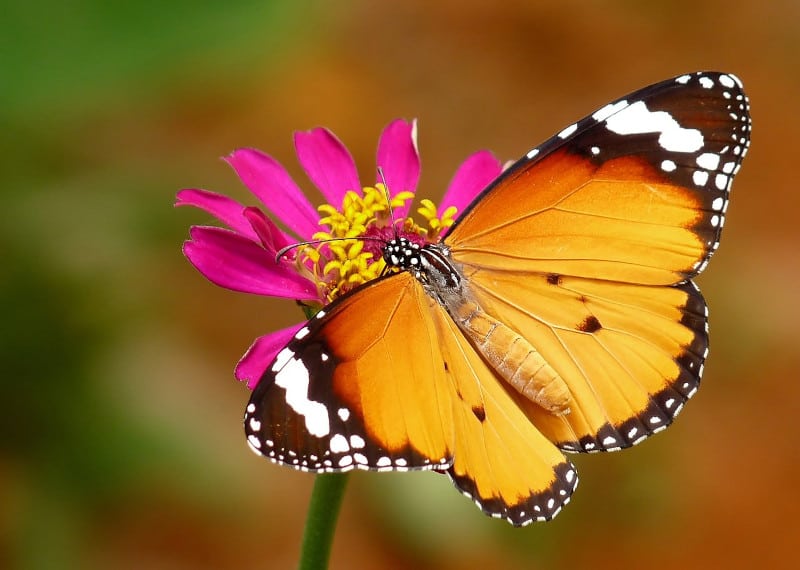

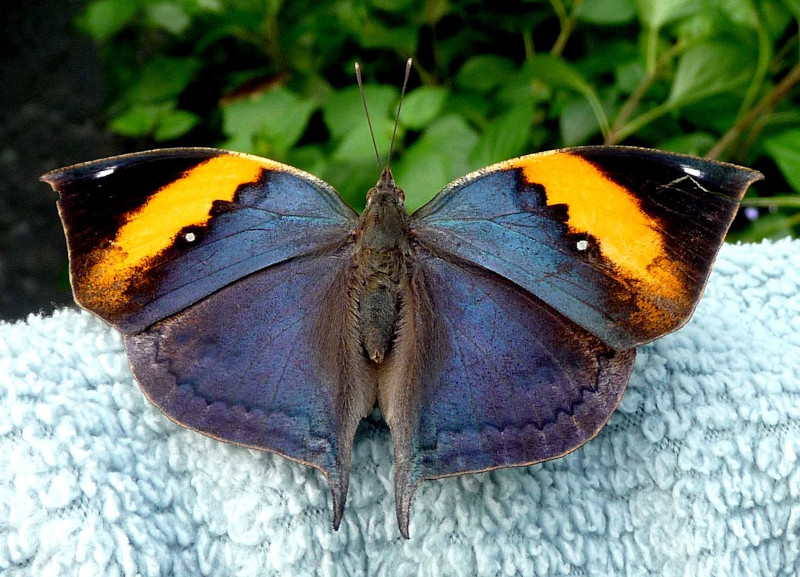
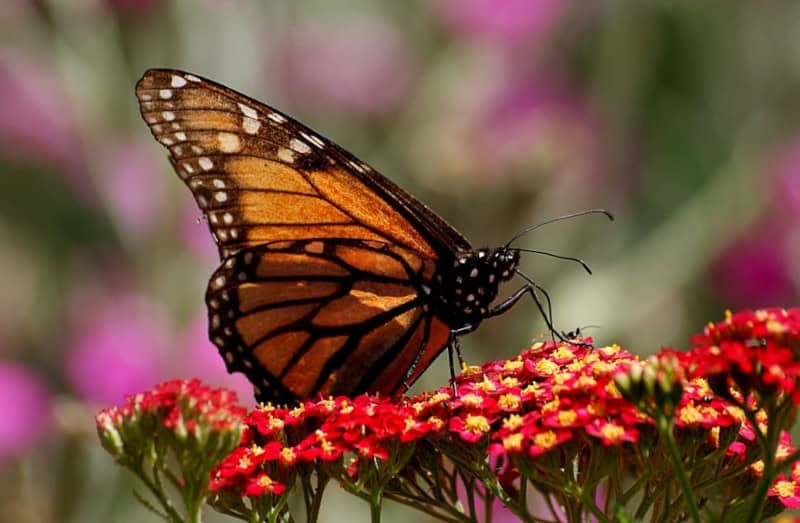
Monarch Butterfly Physical Description
The captivating Monarch Butterfly fully merits appreciation by those individuals fortunate enough to encounter it. Unlike some of its many relatives, though, it does so for several reasons. Its sheer beauty certainly qualifies as one factor. Yet it also boasts some impressive statistics in terms of size.
This gorgeous animal does follow one pattern that’s common among its kind, as well. That’s due to the fact that the insect displays a degree of sexual dimorphism. In its case, this physiological trait manifests itself in terms of both size and appearance. As the very name implies, its quite regal.
Physically, males of the species attain a slightly greater average wingspan than their female counterparts. But this specific gender also displays a noted difference in terms of its appearance. It’s a very minor one, though. On one vein on each hindwing of the males, a tiny black spot displays.
Otherwise, the two genders of the magnificent Arthropod present an extremely similar structure. The wings of both sexes reach an average width of approximately 3.5 – 4 in (8.9 – 10.2 cm). The body, meanwhile, develops as elongated, mostly black, except for a few white spots on the head.
It’s the wings of the aptly-named Monarch Butterfly that typically garner the most attention, however. The uppersides of these appendages typically show a tawny orange hue. The veins of the wings also show black, along with the margins. Two series of small white spots also line those edges.
The forewings additionally evolved to manifest small orange spots near the tips. The underside usually displays very similar, but not completely identical patterns. Their hindwings are yellowish brown, with large white spots. Its forewings also manifest the same coloring pattern on the tips.
- Kingdom: Animalia
- Phylum: Arhropoda
- Class: Insecta
- Order: Lepidoptera
- Family: Nymphalidae
- Genus: Danaua
- Species: D. plexippus

CCL: https://bit.ly/3GeBAhh
Monarch Butterfly Distribution, Habitat, and Ecology
The stunning Monarch Butterly evolved as native to a relatively broad swathe of the surface of our world. The sheer scope of that zone of habitation might surprise some people, though. That’s true since this insect marvel appears in parts of both the Northern and Southern Hemispheres.
Part of that extends all the way from southern Canada, in North America, to southern South America. It’s also found in Hawaii, Bermuda, the Cook Islands, and other islands in the Caribbean. From there, the insect also appears from Australia to the Philippines, and as far as Morocco.
This wonder of Nature and evolution developed as mainly present in several specific habitat types. Yet it nonetheless displays some degree of versatility and adaptability. Most examples, however, make their home in regions consisting of meadows, grasslands, praries, and along roadsides.
Most examples of the wonder further display a strong preference for the presence of other determining factors. These include such things as proximity to smaller streams, and areas of sufficient sunlight. The awesome creature also prefers the presence of sufficient roosting plant life.
The magnificent Monarch Butterfly also remains world famous for its massive seasonal migrations. A majority of the population migrates to a singly location in Mexico for the winter. Following this, the female lays her eggs during the return trip. These she places on the underside of leaves.
Those eggs most commonly appear on the foliage of milkweed plant. Despite their extreme toxicity to most species, the larvae of this butterfly consume them vorcaciously. Adults typically live 2 -5 weeks. During that time, they too consume vast quantities of nectar from a wide variety of flora.
Species Sharing Its Range
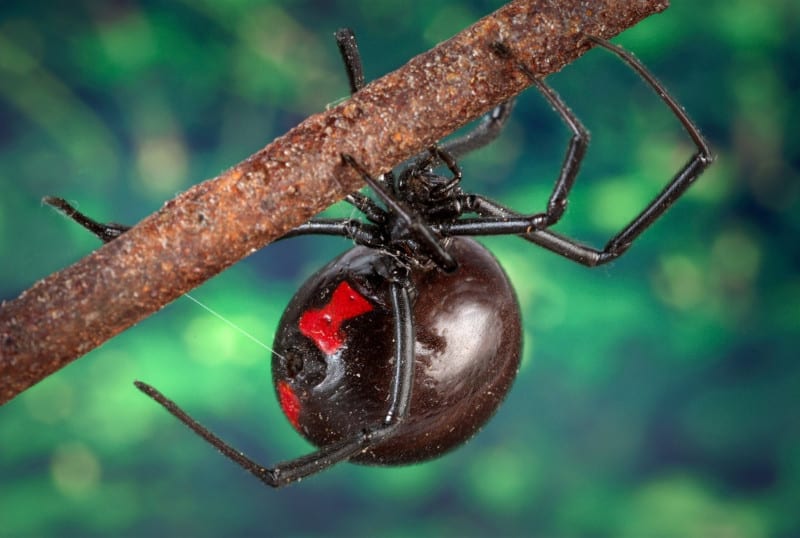
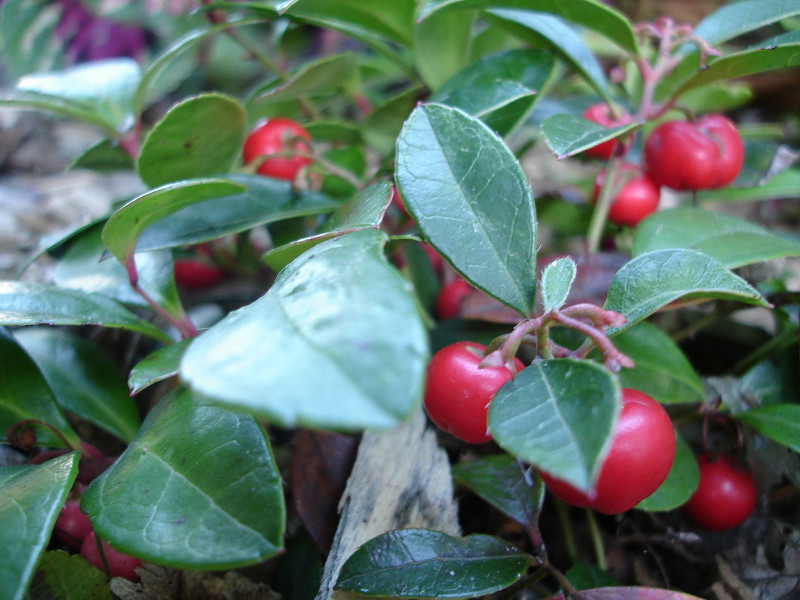

Check out our other articles on 5 Fully Fabulous Foxes, Bluespotted Ribbontail Ray, Onyx River, Common Bottlenose Dolphin, Jelly Ear, Alligator Snapping Turtle, Indian Vulture, Weedy Seadragon









Leave a Reply